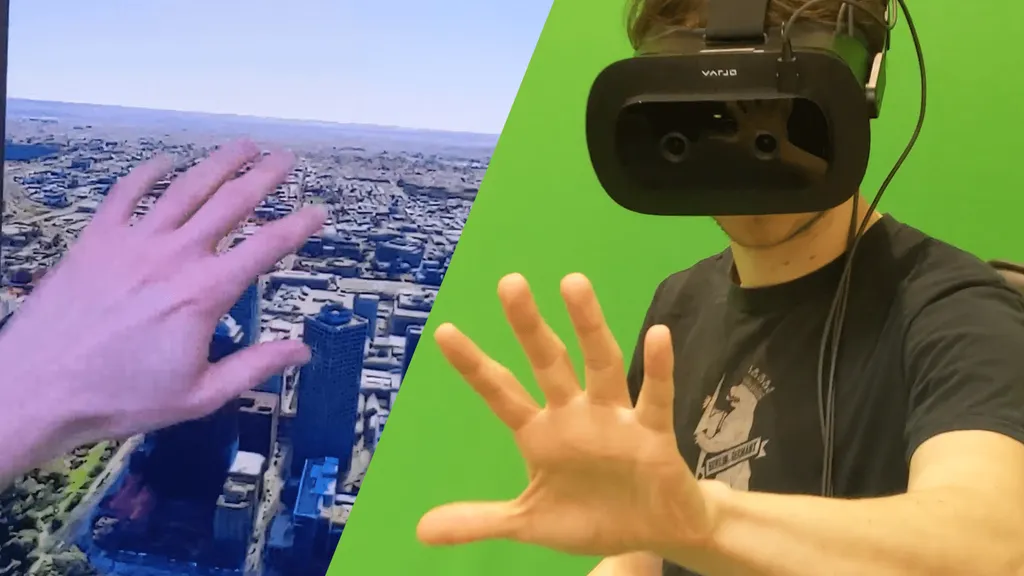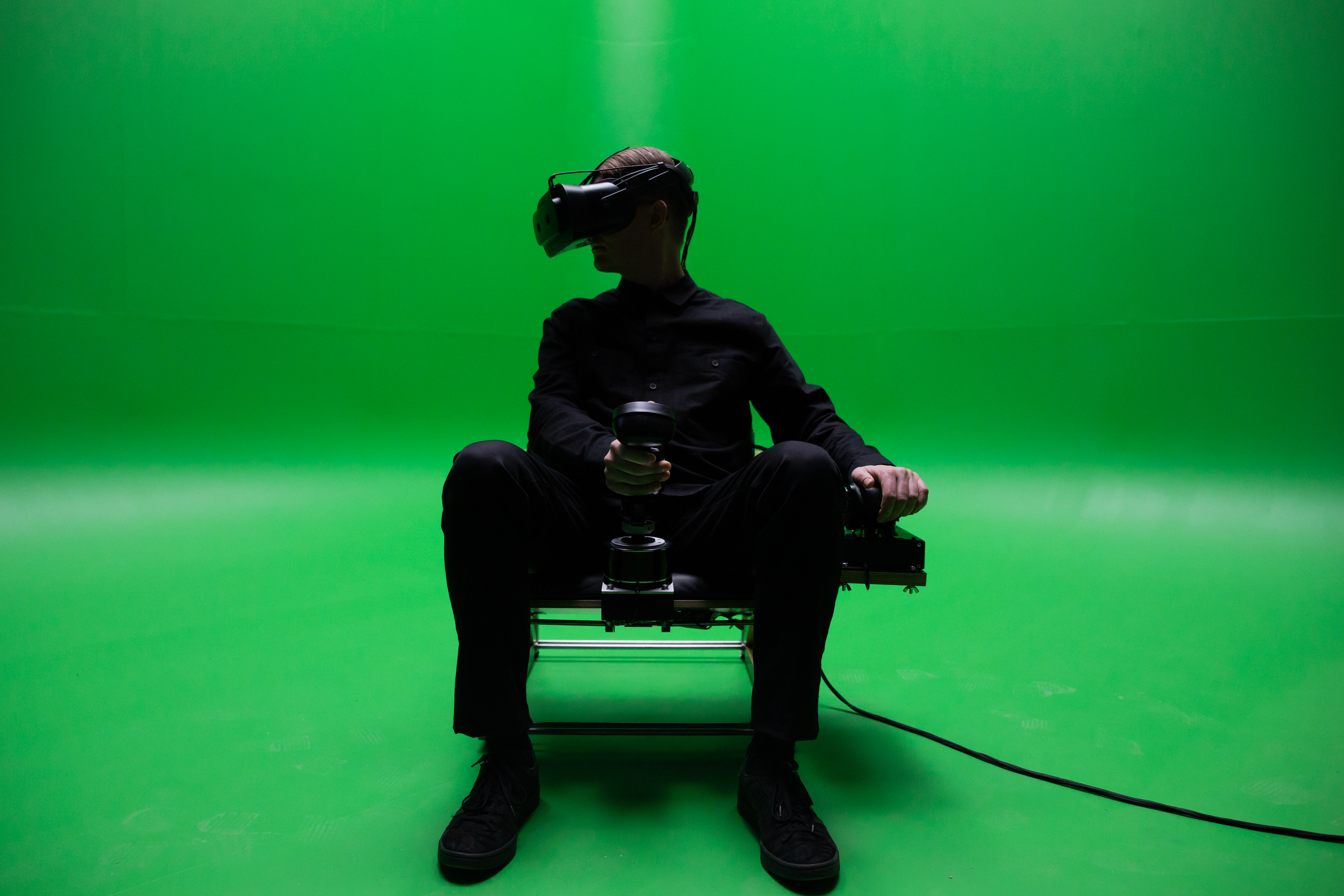Time for another slightly cruel glimpse of the future of VR packaged into Varjo’s ever-impressive enterprise-level VR tech.
Today the Finnish company is releasing an early access version of chroma key integration for its XR-1 headset, facilitating some truly stunning mixed reality support. Chroma key compositing is an effect used to superimpose virtual images over a certain color, like a green screen. We see it used today for many of the mixed reality Beat Saber videos we enjoy on our lunch breaks. But Varjo’s integration, available for free to customers, activates the effect in real-time time inside the XR-1’s passthrough cameras.
That means that, when you look at a green screen with the headset on, you’ll see a virtual world. At the start of my demo in London last week, I gazed on in amazement at Google Earth running on the green screen. It was fully 3D, just like you’d expect, stretching beyond the walls of the room, literally like a window into another reality. But, when I turned my head away from the screen, I saw the real world again. Not only that but my full, human hands could be seen clear as day in the virtual environment and anyone else in the room could step into the screen and appear in my virtual world. It was pretty mind-blowing to behold.
Of course, my hands couldn’t interact with the world itself (though hand-tracking integration could change that) and, if I put them into a building they wouldn’t occlude (more on that later), but the quality of the passthrough made me feel like my entire body had travelled into Google Earth with me for the first time.
This feature, the company tells me, found its way into Varjo’s SDK after a client request. And you can see why; my next demo carves another hole in the wall to reveal a sudden extension to our office space, leading into a stylish kitchen area. Varjo’s Urho Konttori walks over and puts a garbage bin and a pair of shoes next to me. The bin struggles with the reflection of the light, but the shoes instantly look like a part of the scene. Keep in mind, too, that I’m looking at all of this through Varjo’s super high-resolution displays.
Finally on the mixed reality front, I’m shown an enterprise VR favorite; a cockpit experience. Now I balance a flight stick on my lap and find myself inside DCS. I can see my legs, a flight stick I’ve just been handed and my hands, but the rest is entirely virtual, with little in the way of jitters and bugs. Konttori hands me a placard, saying “Imagine if this was a set of instructions or directions.”
Then things get a little weird. We start talking about all the crazy things you could do with this technology. Konttori picks up the green screen on the floor, wraps it around himself and then suddenly disappears inside of Google Earth. He runs to the other side of the room, away from the rest of the screen, carrying a window into the world with him. He has literally become Google Earth, offering glimpses of the 360 view of the Vatican all around me before dropping his makeshift invisibility cloak and reappearing again.
Varjo also showed me its new marker-based AR solution. This is a familiar system; Sony used marker-based AR all the way back in the PSP days, but here it offers rock-solid passthrough AR anchoring for enterprise use. I hold a high definition scan of the Mona Lisa, this time with full occlusion hiding my hands when I put them behind the frame.
Both of these features are available as early access features to the XR-1 developer kit right now. Varjo assures me yet more features are on the way, too. But, as fascinating as this all is, it’s important to remember that the XR-1 is about as far from a consumer headset as you can currently get, coming in at some €9,995. For now, this very much remains a glimpse of a far-flung future, unless you happen to be a military training company or something similarly lucrative. Still, we cam dream, right?



























